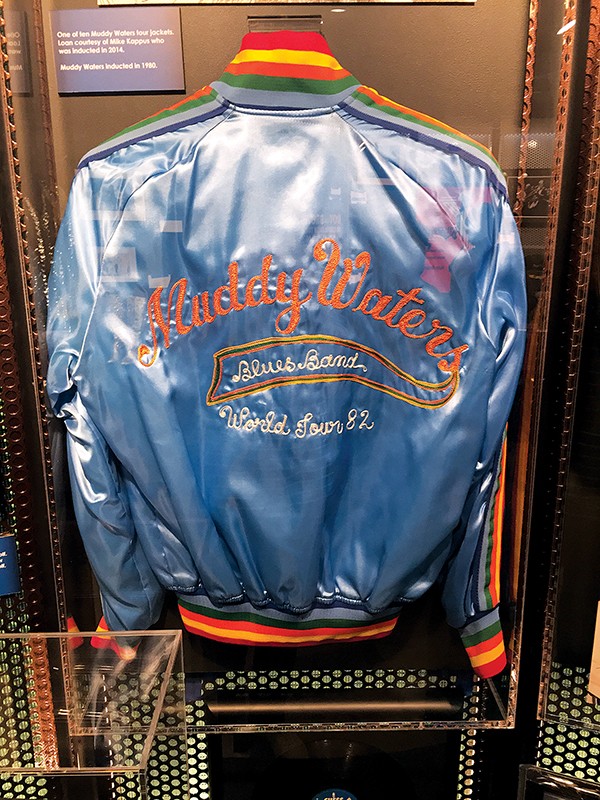It’s appropriate that when ZZ Top’s Billy F. Gibbons makes his appearance at the Delta Blues Museum in Clarksdale this Wednesday, April 9th, he will be celebrating both the creation of the “Muddywood” guitar, in honor of Muddy Waters, and the longevity of the museum itself. His vision of commissioning a guitar paying tribute to Muddy Waters went hand-in-hand with his discovery of the museum some 37 years ago.
“One of my associates in Memphis came back from a sales run which allowed him to pass through Clarksdale,” Gibbons tells me, recollecting events from more than three decades ago. “And he spotted a tiny sign simply stating ‘Blues Museum,’ stuck in the grass next to the curb.”
That alone should indicate how long ago it was, for now the Delta Blues Museum is one of Clarksdale’s and the Delta’s crown jewels. It’s educational programs are the toast of Mississippi, inspiring young people such as Grammy-winner Christone “Kingfish” Ingram to throw themselves into the blues. But when the museum opened in 1979, it was merely a single room, and a little hard to find, even well into the ‘80s, when ZZ Top frequently worked at Ardent Studios, and Gibbons heard tell of the place from his associate.
“The following week,” he says, “we headed down to Clarksdale in search of this blues museum. For a good hour, we were stopping around town asking about it, but no luck. But right as we were about to give up, we were filling up on petrol, and the gas station attendant overheard us talking. ‘Oh,’ he said, ‘you must be talking about Sid Graves and his blues museum, which is located in the public library.’ And with that, we turned around, marched up the steps to the library, and sure enough, found the annex room where Sid Graves had made a place to park his personal collection of artifacts from that great American art form called the blues.”
But there was more afoot than seeing artifacts on the day that Gibbons and company showed up. Graves had his finger on the pulse of the whole Delta region and beyond, including a wide network of blues aficionados. On this day, Graves was consulting with a fellow scholar.
“Lo and behold, visiting Sid was none other than Jim O’Neill,” says Gibbons, “who was the founder of Living Blues magazine. I had met Jim on a couple of occasions. He and Sid had gathered to discuss their concern over a recent storm where the high winds had dislodged a few timbers in the cabin that Muddy Waters grew up in. And they said, ‘It’s just a few miles down the road next to Stovall Farm.’ And we said, ‘Yeah, we will go.’

“Sure enough, there was a pile of rubble that had been gathered up and placed next to the highway. We had a nice visit for a while, and on departure, Sid said, ‘Listen, they’re hauling this refuse away tomorrow. Why don’t you take a stick of this wood as a souvenir?’ And there was a big, big square timber, about six feet long, and we piled it in the trunk of the car. About halfway back to Memphis, my buddy said, ‘What are you going to do with this log?’ I thought for a minute and then I said, ‘Well, I know a guitar maker. We could probably saw this thing, and glue the planks together and cut a guitar out of it.’”
That guitar-maker was none other than Rick Rayburn, Gibbons explains, who owned Pyramid Guitars at the time. Others have identified the cabin plank as cypress wood, and Gibbons said it just happened to be perfect for its new purpose.
“Once it was all together in one piece, there was a bell-like resonance. It was just a match made in heaven, and it turned out to be a really resounding and very strident-sounding instrument.” Its basic shape was a design Gibbons had been toying with at the time. “I had outlined the perimeter of a guitar, and we had it in in a blueprint form. And I thought, ‘Gee, now’s the time to break it out!’ We handed it over to Rick, and he said, ‘How shall we finish it out?’ And I said, ‘Well, let’s give it a nice, bright coat.’ And then I said, ‘I’ve got a design for a graphic.’”
The paint job Gibbons had in mind spoke to the very muddy waters that the great bluesman (born McKinley Morganfield) had lived beside for so long. “The squiggle down through the body and down all the way down the neck is the Mississippi River,” Gibbons notes. “The two colors represent the water and the banks of the river. And it culminates in the headstock, which is kind of a deltoid shaped piece, representing the Mississippi Delta.”

It came out better than anyone had dreamt possible. “We tagged it the Muddywood guitar,” says Gibbons, “and it was such a delightful instrument, we thought, ‘Gee whiz, this would make a nice addition to the collection that Sid Graves put together.’”
The rest is history, as that encounter led ZZ Top to contribute funds to the museum, which in turn spawned matching grants and an ambitious event in which Muddywood was added to the museum’s collection. John Lee Hooker even showed up. It was just the kickstart that the Delta Blues Museum needed, paving the way for its eventual move into a train depot in Clarksdale, which it still calls home today.
This Wednesday, the support that Gibbons and his band gave to what is now a Delta landmark will be honored in a full-circle moment, as the museum pays tribute to ZZ Top at a “Crossroads Connection” event, part of its annual Muddy Waters Month celebration. The program kicks off at 2:00 PM at the Delta Blues Museum Stage where local musicians, civic leaders, and state dignitaries will help the Museum thank Billy and ZZ Top for their long-time support of the blues and the culture of the Mississippi Delta. Live music will be provided by the award-winning Delta Museum Student Band, joined by Gibbons, who will play the Muddywood guitar for the occasion. That event in turn will serve as a lead up to the 2025 Juke Joint Festival that kicks off in Clarksdale this Saturday.
At 3:00 PM, festivities will continue inside at a ticketed reception in honor of Gibbons and in support of the museum’s programs. There, Gibbons will be joined in conversation by the Delta Blues Museum’s “Blues Ambassador,” Charlie Musselwhite, a Delta native, Grammy winner, and Blues Hall of Fame and Memphis Music Hall of Fame inductee. The two will discuss the life and legacy of Muddy Waters and his enduring influence on music. Visit this link for tickets.


